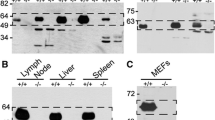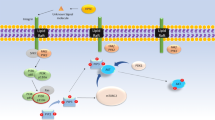Abstract.
Enolase, a key glycolytic enzyme, belongs to a novel class of surface proteins which do not possess classical machinery for surface transport, yet through an unknown mechanism are transported on the cell surface. Enolase is a multifunctional protein, and its ability to serve as a plasminogen receptor on the surface of a variety of hematopoetic, epithelial and endothelial cells suggests that it may play an important role in the intravascular and pericellular fibrinolytic system. Its role in systemic and invasive autoimmune disorders was recognized only very recently. In addition to this property, its ability to function as a heat-shock protein and to bind cytoskeletal and chromatin structures indicate that enolase may play a crucial role in transcription and a variety of pathophysiological processes.
Similar content being viewed by others
Author information
Authors and Affiliations
Additional information
Received 6 December 2000; received after revision 24 January 2001; accepted 26 January 2001
Rights and permissions
About this article
Cite this article
Pancholi, V. Multifunctional α-enolase: its role in diseases. CMLS, Cell. Mol. Life Sci. 58, 902–920 (2001). https://doi.org/10.1007/PL00000910
Issue Date:
DOI: https://doi.org/10.1007/PL00000910




